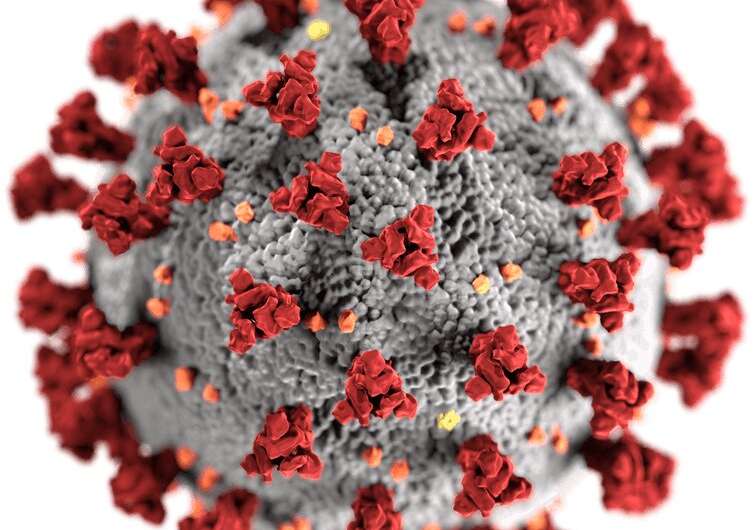
How well do vaccines protect against the new variants of the coronavirus? This is a question we—a group of scientists and doctors in Nottingham—set about answering earlier this year, having collected blood samples from a number of nurses and doctors throughout the pandemic.
We started taking blood from healthcare workers back in April 2020, in the peak of the first wave, to see how many of them had been infected with the coronavirus and what their levels of antibodies were. We followed up with them in the summer and then again in the autumn, so we knew exactly who had had COVID-19 and when.
We then asked a group of them to give us blood samples after they had received their first and second vaccine doses. We measured their antibody levels after each dose, and also specifically their levels of neutralizing antibodies, which are those that attack and nullify the virus (as distinct from binding antibodies, which flag the virus to other immune cells).
We also kept hold of these samples so that we could, in the future, test how well the antibodies created by vaccination neutralized variants of the coronavirus that the participants hadn’t seen. We subsequently measured the antibodies’ activity against the original form of the virus that was identified in Wuhan as well as the beta (B1351) and gamma (P1) variants.
How to test for protection
Neutralizing antibodies attach to a virus in a way that prevents it from infecting cells. The higher the levels of neutralizing antibodies against a variant of the coronavirus, the less likely that a person will become infected or get severe COVID-19 from that variant.
To measure neutralization, we used a mouse virus called MLV, which had been modified so that it could infect but not replicate inside a cell. The virus also carried a gene that causes it to generate light once it gets inside a cell.
We then covered the surface of MLV with the spike proteins found on the outside of the coronavirus, which are what it uses to infect cells. Each variant has slight differences in its spike proteins, and this system, called pseudotyping, enabled us to “swap out” the proteins of the different variants we were interested in, so we could test the antibodies against them all.
In principle we could have used the variants of the coronavirus themselves, but since this requires biocontainment we chose MLV instead. It is easier to handle in lab conditions and has been shown to perform just like the coronavirus when pseudotyped.
In a lab, we then looked to see whether—in the presence of the healthworkers’ antibodies—MLV could get inside a cell when coated with the various different sets of spike proteins. If a healthcare worker had neutralizing antibodies against a variant, these blocked the virus from entering the cell, meaning no light was emitted. If they didn’t have virus-neutralizing antibodies, then the modified virus could enter the cell and we could measure the light emitted once inside.
When we cross-referenced this data with who had been infected earlier on in the pandemic, we found that volunteers who had previously caught the virus (which is similar to having an additional vaccine dose) had higher levels of antibodies after their first and second vaccine doses than uninfected volunteers. The effect was very noticeable for the variants.
In particular, past infection plus two doses of vaccine increased the chances of neutralizing the beta and gamma variants. The level of neutralization in this scenario was similar to that seen in fully vaccinated but uninfected people when confronted with the original, Wuhan form of the virus—a level that we know is protective against disease.
In our experiments we didn’t directly study the impact of an additional vaccine dose, but our results suggest that one is likely to increase levels of immunity to commonly circulating variants of concern. Each additional exposure to the virus in general—whether by vaccination or infection—seemingly expands the immune system’s ability to recognize it, making it more likely for someone to show a stronger antibody response to any form of the virus in future.
Even against forms of the virus that we didn’t look at, such as delta, we would expect protection to be higher after more instances of viral exposure. The effect of this could be to reduce levels of infection, transmission and, in some highly vulnerable people, disease.
A boost for boosters?
There’s considerable debate currently about how best to use global vaccine supplies. Should additional doses be used to better protect the few who are already double vaccinated, or should there be more equitable distribution, to spread basic vaccine coverage more widely around the world?
On the one hand, a recent population study from Public Health England reported that receiving two doses of either the Pfizer of AstraZeneca vaccine provides high levels of protection against disease caused by the now dominant delta variant (B16172). This would suggest that booster doses aren’t needed—at least not initially.
There’s also emerging evidence (still awaiting review by other scientists) that natural infection with delta may produce stronger protection than that created currently by vaccines. This would suggest that those who’ve already caught delta are currently well protected.
On the other hand, we know that some variants—such as delta and beta—are less well controlled by vaccines, and there’s also emerging evidence that the immunity generated by COVID-19 vaccines wanes over time.
In the face of these challenges, our data suggests that an additional vaccine dose would likely generate gains in levels of immunity, especially against variants of concern. Giving an extra dose might therefore be crucial for reducing infection and transmission in health and care settings and to protect particularly vulnerable people from severe disease.
Source: Read Full Article
